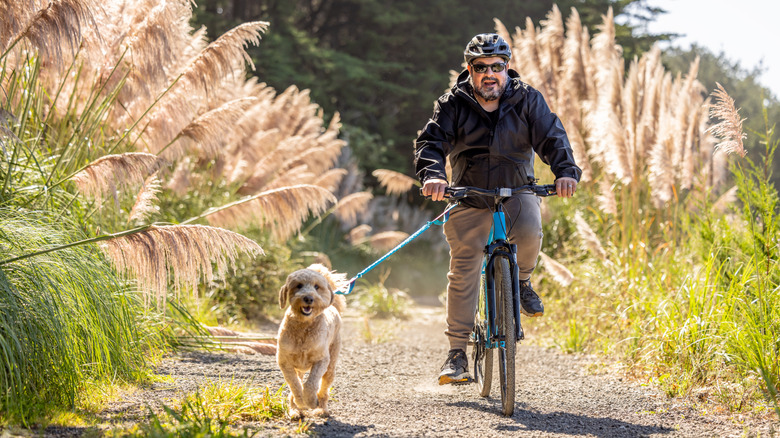Are Ornamental Grasses Poisonous To Dogs?
Ornamental grasses are used to create visual interest and add a variety of textures to yards. Most of these plants are safe for dogs and other pets, with pampas and grass palm being key exceptions. It is essential to identify these grass types in order to eradicate them from your yard and prevent your canine from eating them and getting sick.
Poisonous pampas characteristics
There are several different types of pampas grass, including Cortaderia selloana, but they all have the same general characteristic: Pampas grass blooms with large feathery plumes that stand up over the foliage of the plant. The plant is shaped like a small clump and its long hanging stems barely brush the ground.
During the winter, the plant goes into dormancy and turns a golden shade of brown. Blooms are typically either white or a light shade of pink. Avoid planting any pampas family of grasses near a dog run or backyard.
Symptoms of dog poisoned by pampas
Pampas grass, when ingested, can cause sickness or death. Dogs can have a varied reaction to the poisonous pampas grass such as vomiting, drooling diarrhea, seizures, or coma. Pets that eat poisonous plants often hide from their owners when they feel bad. Gardeners can look across their landscape at the ornamental grass to see if the pet has visited the area. If your pet displays any of these signs, you should take him to the veterinarian immediately.
Poisonous grass palm characteristics
Cordyline australias, also called grass palm, palm lily, or giant dracaena, grows in a fountain shape with long narrow stems that stand straight up from the rest of the plant. Sometimes, when this grass has been planted on dry soil or when it experiences a drought, the leaves will discolor and will change to a brown or a yellow hue. Remove any grass palm or palm lily from your garden and backyard.
Symptoms of dog poisoned by grass palm
Dogs can experience vomiting with blood, dilated pupils, depression, increased saliva, and anorexia after eating this ornamental plant. The toxin to blame is called saponins, which can harm the digestive track of the dog. It is important to take your dog to the vet immediately after discovering the pet has eaten the grass.
Dog friendly ornamental grasses
Dogs love to run, and they particularly love to run around the same paths over and over again. So, your backyard can become worn. Here's the advantage of dog friendly ornamental grasses: Because ornamental grass in general is durable, it can be used to line the well-worn path. Grouping grasses together can also provide a protection or screen for more fragile plants in the garden.
But select carefully and avoid grass palms and pampas. Dog friendly ornamental grasses include Miscanthus or Morning Light, a vase-shaped grass growing to heights of four feet, and Calamagrostis or Karl Foerster, a straight dull colored grass with wheat-like plumes. Note that the latter is dog-friendly but has sharp points. If a lower growing plant is needed, try Hakonechloa, or Japanese forest grass. It's soft, favors shade, can be walked on and if dogs (or cats) chew it, that's not a significant concern.
